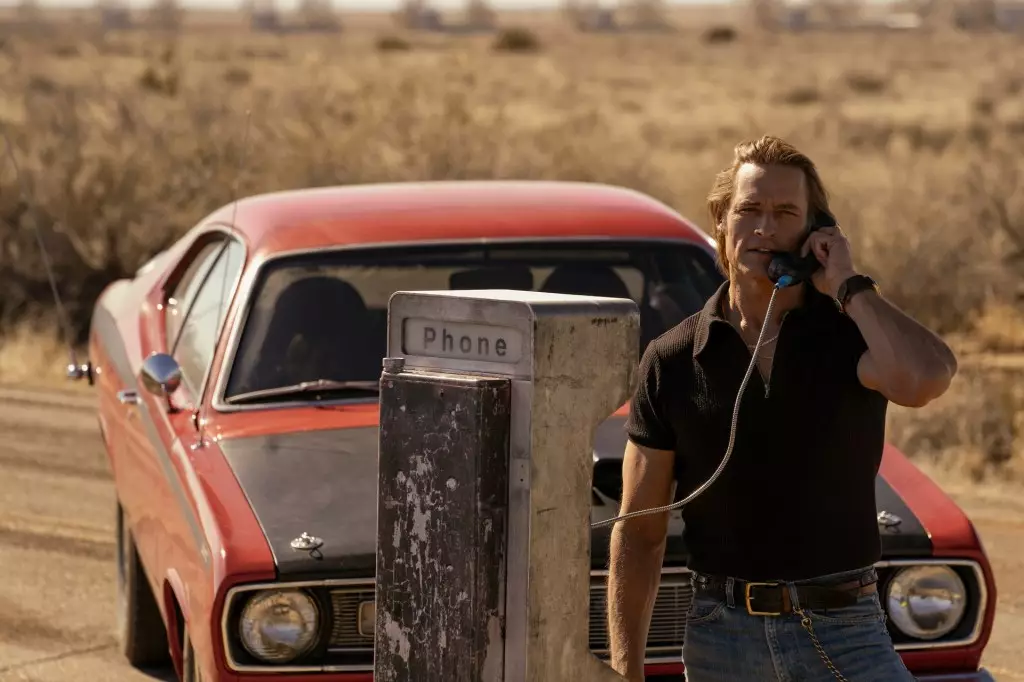The abrupt cancellation of HBO Max’s *Duster* after just one season exemplifies the unpredictable nature of modern streaming content and raises important questions about what it truly takes for a series to succeed in today’s saturated market. Crafted with care by renowned creators J.J. Abrams and LaToya Morgan, *Duster* was positioned as a compelling period crime drama set against the gritty backdrop of 1970s America. Despite a five-year buildup, strategic star casting, and strong critical reception, it faltered in capturing widespread viewer interest—underscoring a critical disconnect between quality and commercial success in the streaming landscape.
While critics lauded the series—giving it an impressive 92% on Rotten Tomatoes—the crucial metric for streaming platforms remains viewer engagement. HBO Max’s decision to drop *Duster* underscores how even well-produced, critically acclaimed shows can struggle without broad audience appeal. In the crowded realm of digital entertainment, high critic scores often do not transfer into subscriber retention or acquisition, especially when the show doesn’t generate a viral buzz or tap into trending cultural conversations.
The Illusive Quest for Streaming Stardom
*Duster*’s modest performance illustrates a broader challenge for high-concept or niche series. Although it maintained a presence in the daily Top 10 on HBO Max, it failed to crack the Nielsen Top 10 or make a significant impact on Luminate’s Top 50 streaming rankings. This disconnect reveals a harsh reality: algorithms and curated content recommendations are insufficient if a show cannot sustain viewer interest or spark shared conversations.
Moreover, the series’ struggle highlights how difficult it is for even established studios, like Warner Bros. and Bad Robot, to break through the noise. Streaming consumers are bombarded with options—original content, acquired shows, and endless repeat cycles—making it harder than ever for individual series to find a dedicated audience. The failure to extend the cast’s options beyond the initial season hints at the financial and strategic realities of streaming production—namely, that longevity often hinges on immediate performance metrics rather than creative potential.
Strategic Shifts in Content Development and Distribution
In response to this tough reality, Warner Bros. and Bad Robot reportedly attempted to reposition *Duster* by shopping it around to other platforms—an indication of the industry’s ongoing search for the right fit and audience. Unfortunately, these efforts proved unsuccessful, signifying a pivotal challenge for creators: whether high-caliber storytelling will find a home or be stifled by platform-specific preferences and market dynamics. The series’ failure to find an alternative platform suggests the evolving importance of strategic platform alliance and the need for shows to align precisely with audience expectations.
J.J. Abrams’s involvement initially built excitement, but even a visionary creator cannot guarantee success without the right context or audience. The show’s setting and themes, although rich and textured, might have been too niche or slow-burning for widespread appeal. This points to an emerging pattern: quality alone isn’t enough. Instead, series success increasingly depends on algorithms, timing, cultural relevance, and effective marketing strategies.
The Reality Check for Creators and Industry Stakeholders
*Duster*’s fate offers a sobering lesson to creators and studios alike. Aspirations for long-term storytelling are often curtailed by the harsh metrics of viewer engagement and retention. For Abrams and Morgan, the experience is a reminder that even seasoned storytellers must navigate a landscape where audience preferences are highly volatile and platforms prioritize immediacy and shareability over depth and nuance.
Furthermore, the decision to let the series go despite its critical praise reveals a fundamental shift: streaming platforms are increasingly pragmatic about what they invest in. High-quality storytelling isn’t enough to secure continuation unless it directly translates into subscriber growth or retention. This shift prompts creators to rethink their approach—balancing artistic integrity with market-driven strategies.
*Duster*’s quick exit underscores the ruthless nature of the streaming business, where even a meticulously crafted series representing creative ambition can become collateral damage in the relentless pursuit of algorithms, viewer metrics, and audience engagement. As the industry evolves, the challenge for producers and streamers is to find new pathways to capture audience attention—beyond critical acclaim and into the realm of cultural relevance and viral impact.
